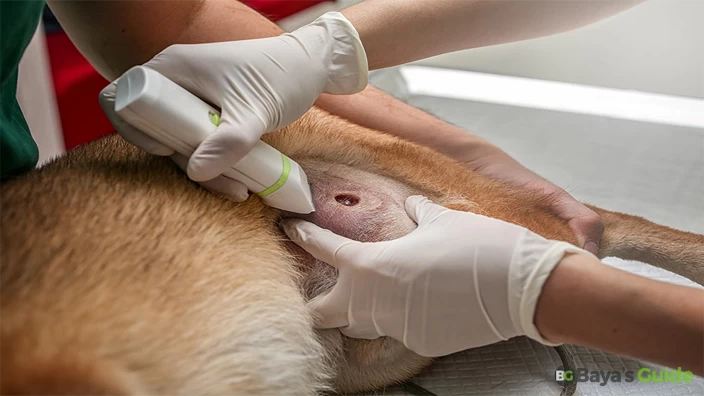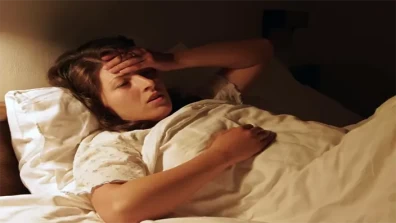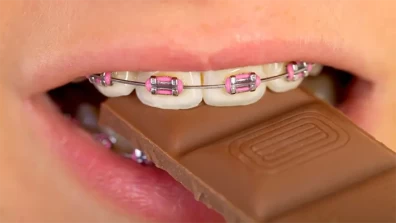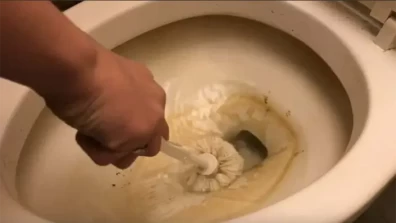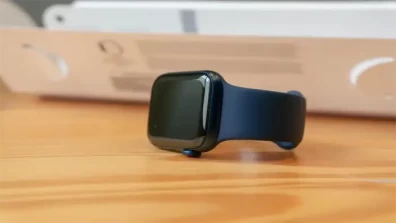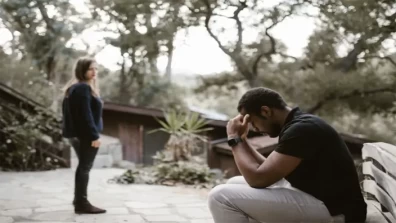Dogs are playful and curious animals, which sometimes lead to minor wounds and injuries. Proper wound care is essential to prevent infections and promote faster healing. Cleaning a dog's wounds requires patience, caution, and the right techniques.
A wound is a tear, slash, or injury your tissues get whether it may be an open wound or a closed wound a kind of bruise, or a black-and-blue mark. That’s the reason, the pet parents try to keep their puppies safe from accidents that can happen during their rigorous playtime while they are having dual interaction, and as a result, they get injured.
Table of Contents
- Types Of Dog Wounds
- Clean Dog Wounds - Step-By-Step Care Guide
- 1- Compose & Pacify Your Pet Dog
- 2- Gather Supplies
- 3- Envelope The Muzzle dog
- 4- Prepare Yourself & Your Dog
- 5- Address Its Bleeding
- 6- Clean The Wound
- 7- Clip Away Hair From & Around The Wound
- 8- Use Mild Soap
- 9- Antiseptic Solution
- 10- Pat Dry
- 11- Apply Antibiotic Ointment & Dress The Wound
- 12- Apply A Tourniquet Under Expert Instruction
- 13- Monitor The Wound
- 14- Seek Veterinary Help
- 15- Ongoing Care
- Frequently Asked Questions
- Conclusion
Types Of Dog Wounds
Dogs receive many kinds of wounds such as cuts, abrasions, burns, scratches, bites, and lacerations ranging from forbearing to severe injuries. You need to care for and cure them as per the nature of the wounds. Also, bear in mind what is the best way to cure the wound and parallel to it how to avoid complications and infections.
- Minor lacerations and scrapes are the common wounds that the dogs may receive in their daily routine while playing games, collisions, or interacting with other fur kids.
- Sometimes they receive deep cuts, skin damage, or hidden injuries underneath the tissues that can lead to severe complications or stitches to heal eventually.
- Very often they receive wounds after a sharp object, a gunshot, or a small bite of their kinds of species, but it gets worse due to infection. The skin heals apparently by veterinarians but the infection ferments inside the skin and causes bursts or swells anywhere in the body organ.
- The rare disease is Rabies, the most pernicious is also infected by the cut of another dog that has already caught hydrophobia or lyssa.
Note: Keep your pets vaccinated customarily.
- You might have noticed a dog licking its body again and again cause of moist wounds, skin allergies, or injuries.
- Burns occur to them while passing by flames, fires, grilling, or sometimes sunburn.
- Surgically healed wounds have the risk of infection if they are not properly cared for.
Clean Dog Wounds - Step-By-Step Care Guide
In this guide, You'll be provided with a step-by-step approach to cleaning & caring for your dog's wounds effectively so that the furkids are healed and restored earlier.
1- Compose & Pacify Your Pet Dog
After noticing and observing the injury of your dog, the first thing you need to do is to pacify it, if it is agitated and unnerved. Put it in your lap or pat it gently. Speak to it in a very low and soothing tone and try to read its body language as well.
2- Gather Supplies
Before you begin, gather all the necessary supplies. You'll need:
- Clean gloves
- Muzzle or leash
- Clean towels, rags, or gauze pads
- An antiseptic solution (such as hydrogen peroxide or betadine solution)
- Cleaning solution, A mild soap
- Lukewarm water
- A syringe (without the needle) for flushing wounds
- Sterile or Self-adhesive bandages
- Bandage scissors
- A dog-safe antibiotic ointment.
- Spray bottle
3- Envelope The Muzzle dog
Your safety is very important before handling your wounded dog. Bear in mind, that your dog is naturally loving but it can snap at you while growling in a severe stroke of pain. So, muzzle your dog before cleaning and curing it.
In case you haven’t had a muzzle, use a rope or leash to wrap your dog’s mouth. Besides, cover it with a blanket to protect yourself while taking it to the veterinarian.
4- Prepare Yourself & Your Dog
Put on gloves to protect yourself from any potential contaminants. Approach your dog calmly and reassure them with gentle words and patting. If your dog is in pain or extremely anxious, consider using a muzzle to prevent accidental bites. If the wound is on a limb, you may want to have someone help hold your dog still during the cleaning process.
5- Address Its Bleeding
Before cleaning or bandaging, it is vital to cease the flow of blood as soon as possible. The pulsing of blood from the injured area is very dangerous, it should be controlled at once by applying pressure to the wound with someabsorbent material like gauze, soft flannel fabric, or a towel. You need to put direct pressure on the area where the blood is bulging out, for 3-5 minutes. Stop checking it until it turns into a clot.
You Might Be Interested: How To Wrap A Candle For Gift
6- Clean The Wound
Use a syringe to flush the wound with lukewarm water. This helps remove dirt and debris. Hold the syringe close to the wound and apply gentle pressure to clean it thoroughly.
7- Clip Away Hair From & Around The Wound
After the bleeding stops, shave the hair from all around the bleeding area as it can cause bleeding again or hurt the wound if the hair is long. Use an electric clipper to trim the dog’s fur safely and carefully as it may increase the risk of injury if it touches the injured point. Clipping the hair away from thelesion so that you can better expose, observe, and cure it efficiently.
8- Use Mild Soap
If the wound is dirty, use mild soap diluted in water to clean the surrounding area. Gently lather the soap around the wound, being careful not to directly apply soap to the wound.
9- Antiseptic Solution
After cleaning with soap, apply an antiseptic solution of hydrogen peroxide or betadine to the wound using a clean gauze pad. Avoid cotton balls as they can leave fibers in the wound.
10- Pat Dry
Carefully pat the wound and surrounding area dry with a clean, dry towel or gauze pad. Make sure the wound is completely dry before applying any ointment or bandage.
11- Apply Antibiotic Ointment & Dress The Wound
Apply a thin layer of dog-safe antibiotic ointment to the cleaned wound. Be sure not to overuse the ointment, as excessive ointment can trap bacteria and impede the healing process. Cover the wound with a sterile non-stick pad or gauze pad and secure it in place with a bandage or self-adhesive wrap.
Over and above, greasing the bothering area with antibiotic cream or spray is a very sensitive job. It may scare or sting your dog due to it being more disturbed and painful. Furthermore, wrap the injury fully with protective gauze otherwise your pet can lick the ointment which may double the problem. It’s sheathing to wrapan Elizabethan collar around it.
- Avoid spraying into the dog’s eyes.
- Apply only antibiotic cream. Don’t let it mix with some ointment as it can affect the healing process.
- Avoid theantifungal creams named clotrimazole or ketoconazole without the consultancy of your veterinarian.
- It's great to ask your pharmacist or vet before trying any kind of product on the bothering area of your dog.
12- Apply A Tourniquet Under Expert Instruction
A tourniquet is a band that you can use it tie around the wounded area if the blood is uncontrolled because of stabbing, gunshot, or some pointed glass. It is taken as the last resort when all therapies fail to control bleeding. Apply a tourniquet to your pet dog only when you are clinically trained or do it under an expert’s guidelines- some of them are as under:
- Spread a clean towel or wrap a pad around the bleeding limb. Before tying up the gushing blood area, be very careful, it shouldn’t be at the chest, abdomen, or neck of the wounded dog.
- Leash the dog up so as to hold the tourniquet in one place. It should not be tied above or down the wound.
- Tie it on the bleeding area for 5 to 10 minutes so that the blood will clot and stop releasing the pressure.
- Keep patting your pat during this process because applying the tourniquet is extremely gut-wrenching as the surrounding area of the injury gets very sensitive.
13- Monitor The Wound
Keep a close eye on the wound for any signs of infection, such as increased redness, swelling, discharge, or a foul odor. If you notice any of these signs or if the wound doesn't seem to be healing, consult your veterinarian promptly.
14- Seek Veterinary Help
If you see the cut or bite deeper into the flesh and it seems you not be cured on your own, be hurried to take it to a veterinary hospital. After flushing the wound and draining it off, the vet better asses and suggest a treatment that would definitely lessen the chance of infection. Besides, he better judge the depth of the wound and give it stitches under anesthesia to promote healing safely.
15- Ongoing Care
Keep a regular check on your pup's wound to view the healing proceedings as per the vet’s precautions. Following his recommendations, clean the wound with an antiseptic solution twice to thrice times a day. In case you notice increasing pain or redness, discharge of fluid or blood and swelling, or even a stinky odor arising from the affected area, don’t waste a single second to take it to its respective veterinarian.
Frequently Asked Questions
How Can I Treat My Dog's Wound At Home?
First of all, you need to assess the kind of injury your pet puppy has received. Following up on the instructions given in the article above if there is a mild cut, rinse the wounded area, and trim the fur of the animal to expose it clearly. Then apply the recommended ointment or antibiotic cream gently on and around the scrape, bite, or cut. Let it get dry in the open air or with a dry rug, and bandage it with sterile gauze. Plus, it’s good to rewrap the elastic tape so that the bandage stays in place as long as you want to keep it so.
Is Vaseline OK For Dog Wounds?
Yes, applying Vaseline on the scratch or cut on the dog’s skin doesn’t harm at all. But first, you need to clean, relieve, and cover the dog’s wound area with Veterancy’s Equine Wound & Skincare. It is a protective oil-based ointment exactly like petroleum jelly or Vaseline. It’s suitable to keep the bothering area greasy with some cleanser so that you can remove the bandage or detached hair otherwise they worsen the situation and double the pain by staying stuck to the sore.
Is Wound Wash Safe For Dogs?
It is clinically great to wash the wound before dressing as it reduces the risk of infection. Plus, washing and cleaning of wounds encourages them to a quick relief. You need Saline wound wash solution to wash the injured area as on dogs as you apply on humans.
Which Ointment Is Safe For Dogs Wounds?
While I'm not a veterinarian, there are dog-specific ointments available, such as Neosporin®, highly recommended for scratches, bites, or minor cuts. It's a valuable addition to your pet's first aid kit. Remember, consult your vet before using any ointment, as they can suggest safe options tailored to your dog's unique condition.
Conclusion
Proper wound care is crucial for your dog's well-being. By following these steps and providing gentle, attentive care, you can help your furry friend recover from minor wounds and injuries safely and swiftly. Always remember that if the wound appears severe or your dog is in significant pain, it's best to seek professional veterinary care for the appropriate treatment and guidance. Your dog's health and happiness depend on your prompt and careful attention to their wounds.


